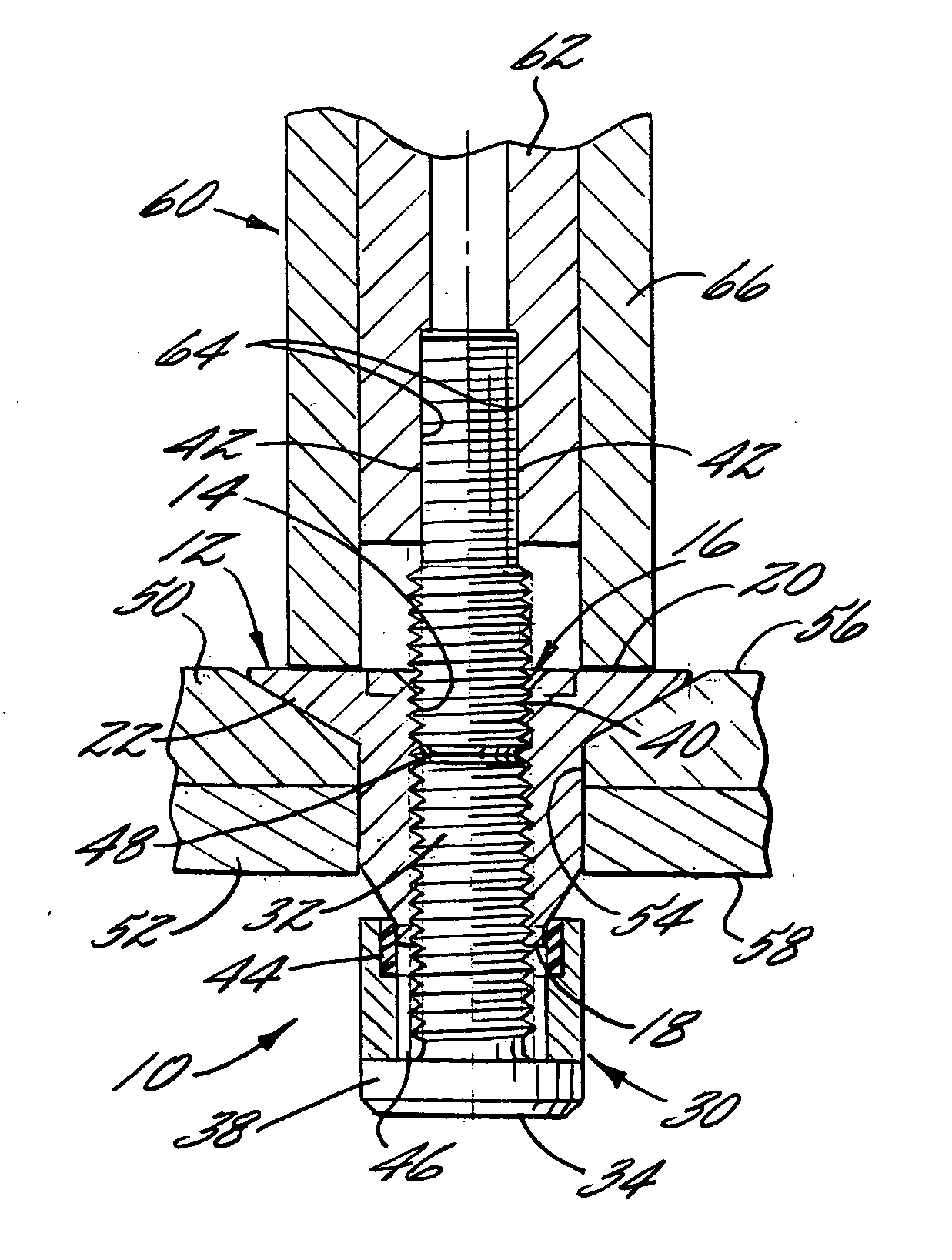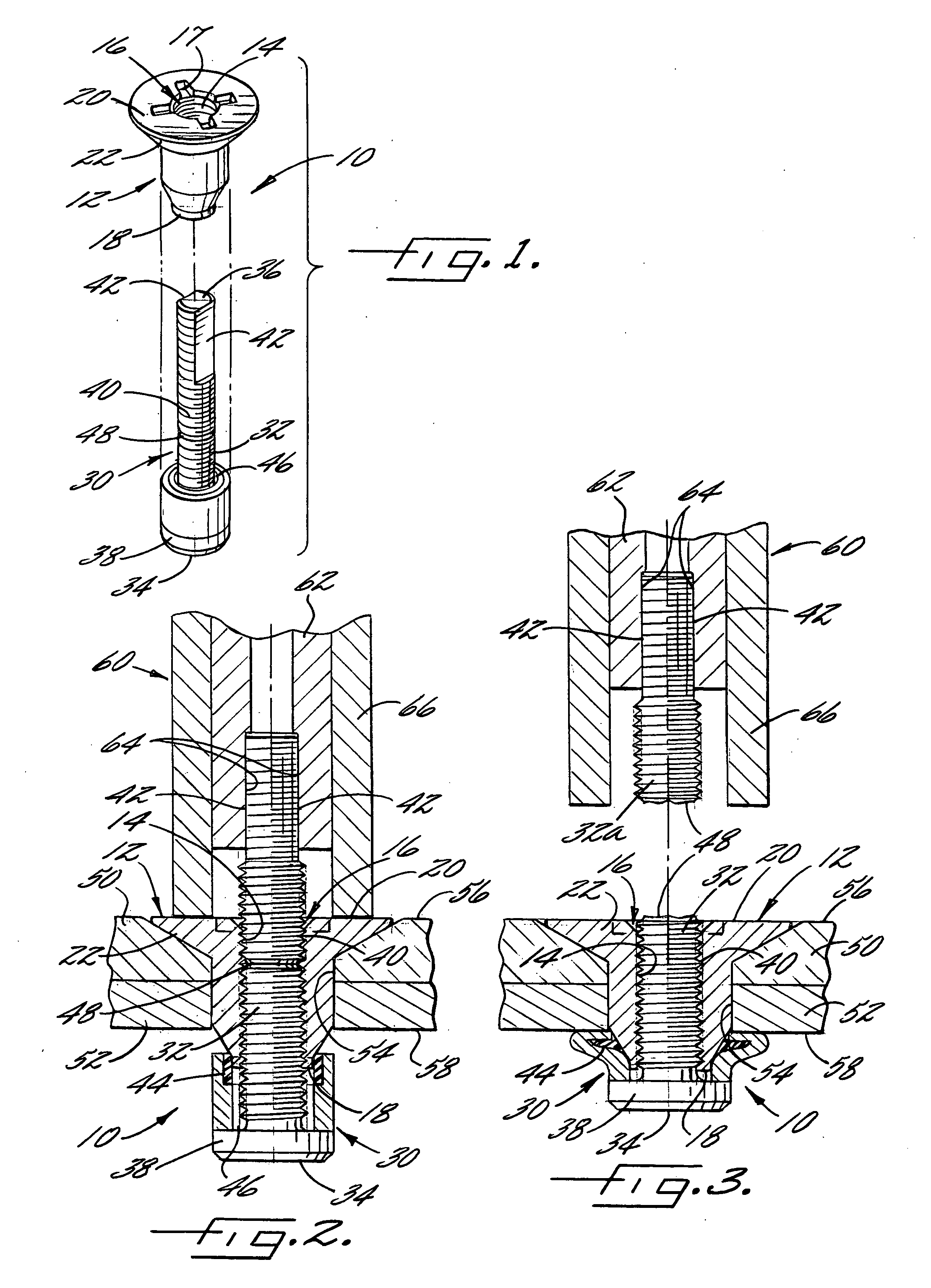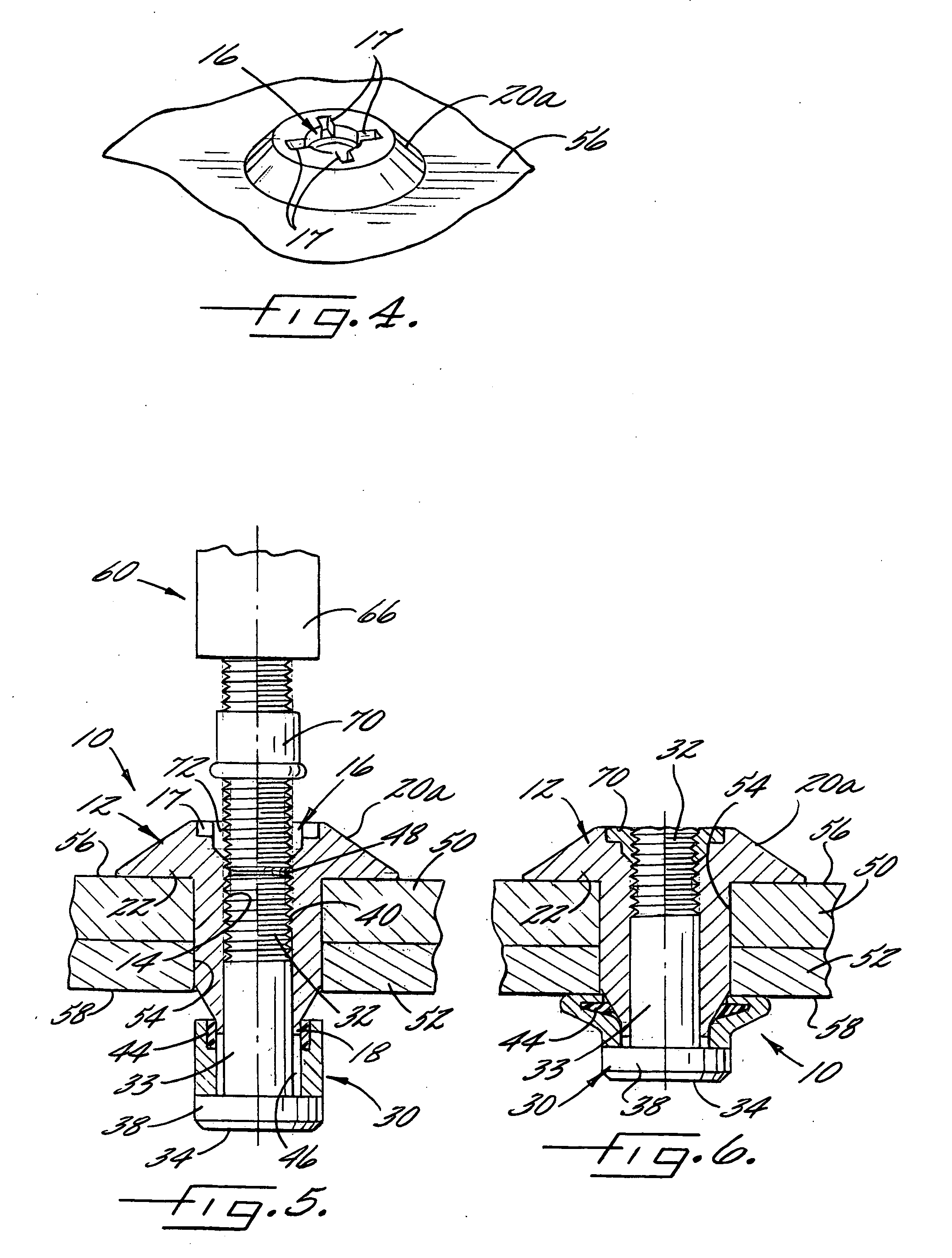Hybrid fastener apparatus and method for fastening
a hybrid fastener and apparatus technology, applied in the direction of fastening means, screws, dowels, etc., can solve the problems of composite structural members delamination, inadequate sealing, inadequate electrical continuity, etc., to reduce the likelihood of delamination, improve the electrical continuity of structural members, and reduce the effect of galvanic corrosion
- Summary
- Abstract
- Description
- Claims
- Application Information
AI Technical Summary
Benefits of technology
Problems solved by technology
Method used
Image
Examples
Embodiment Construction
[0024] The present invention now will be described more fully hereinafter with reference to the accompanying drawings, in which some, but not all embodiments of the invention are shown. Indeed, this invention may be embodied in many different forms and should not be construed as limited to the embodiments set forth herein; rather, these embodiments are provided so that this disclosure will satisfy applicable legal requirements. Like numbers refer to like elements throughout.
[0025] Referring now to the drawings, and in particular to FIG. 1, there is illustrated a composite-metallic hybrid fastener 10, which can be used for fastening structural members. In particular, as shown in FIGS. 2 and 3, the fastener 10 can be installed in an aperture 54 that extends between first and second sides 56, 58 of the structural members 50, 52 to thereby fasten the structural members 50, 52. The fastener 10 is compatible with various types of structural members. For example, the fastener 10 can be us...
PUM
 Login to View More
Login to View More Abstract
Description
Claims
Application Information
 Login to View More
Login to View More - R&D
- Intellectual Property
- Life Sciences
- Materials
- Tech Scout
- Unparalleled Data Quality
- Higher Quality Content
- 60% Fewer Hallucinations
Browse by: Latest US Patents, China's latest patents, Technical Efficacy Thesaurus, Application Domain, Technology Topic, Popular Technical Reports.
© 2025 PatSnap. All rights reserved.Legal|Privacy policy|Modern Slavery Act Transparency Statement|Sitemap|About US| Contact US: help@patsnap.com



